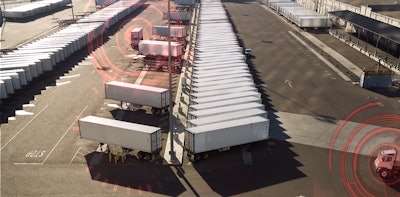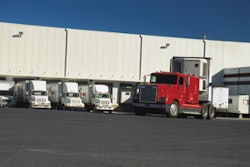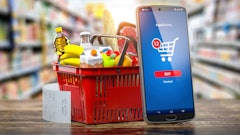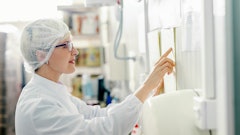
Yard management has typically been low priority for many companies. Increased pressure from carriers and consumers, leading to rising transportation costs and capacity issues, however, is requiring faster and more efficient operations across all areas of the supply chain.
For the most part, most organizations have already adopted solutions to solve for the pain points across their transportation network and in the warehouse, so the next logical step is a solution for their own backyard yard.
“More or less people have solved a lot of the other problems. They’ve solved the problem in the warehouse. They’ve solved the problem outside of the yard in the transport management side of things. Now there’s that one area that still needs to be resolved, which is just the yard,” says Greg Braun, senior vice president of sales and marketing for C3 Solutions, a provider of yard management and dock scheduling software.
Log in to view the full article
Yard management has typically been low priority for many companies. Increased pressure from carriers and consumers, leading to rising transportation costs and capacity issues, however, is requiring faster and more efficient operations across all areas of the supply chain.
For the most part, most organizations have already adopted solutions to solve for the pain points across their transportation network and in the warehouse, so the next logical step is a solution for their own backyard yard.
“More or less people have solved a lot of the other problems. They’ve solved the problem in the warehouse. They’ve solved the problem outside of the yard in the transport management side of things. Now there’s that one area that still needs to be resolved, which is just the yard,” says Greg Braun, senior vice president of sales and marketing for C3 Solutions, a provider of yard management and dock scheduling software.
Digital transformation projects across the supply chain, which have created greater visibility, are to thank for much of the yard management shift, explains Matt Yearling, CEO of PINC Solutions, who adds that logistics managers are finally waking up to the gap in their yard.
“People are seeing this as a blind spot between transportation and warehouse and are beginning to figure out how to eliminate that blind spot,” he adds.
Long trailer wait times, unproductive personnel numbers, poorly synchronized movement of goods and ineffective dock planning are among those gaps, which can be especially damning in the food industry where quality and freshness, customer expectations and timely deliver are crucial.
Recent changes in government mandates and regulations have also put increased pressure on vehicle and driver time, making it all the more critical for trucks to be efficiently managed in the yard, adds Dan Clark, founder and president of Kuebix.
“All of these things combine to make shippers without yard control unattractive partners to carriers that have the option to take their capacity elsewhere. The same goes for customers who expect their products on time and with excellent service,” Clark explains.
And if you’re going to solve the visibility and productivity problems in your yard, Braun adds “it’s going to take a bit more sophistication than two-way radios and clipboard.”
Yard Management’s Evolution
In simple terms, good yard management is about ensuring the right trailer gets to the right spot at the right time—and doing that as effectively as possible.
In a traditional yard, you have a dedicated hustler driver that moves trailers around. Those drivers are very costly, and ultimately there are limits to how efficient they can be, which generally also causes a visibility problem.
“People come to us and say, ‘My yard is costing too much money. We’ve got tons of yard drivers out there. They’re not very efficient. I’ve got people taking manual inventories of my yard, and I don’t know what’s in the yard. Even if I know it’s there, I have a hard time getting it unloaded in time just because I don’t have that visibility,” Braun says.
Velocity is also a huge problem in the yard. Carriers spend a lot of time sitting idle, and with an ongoing driver shortage and new regulations monitoring their hours of service, drivers have become choosier about where they spend their time.
“Carriers will say that they’re probably 65 percent productive, because a big chunk of their time is idle. They spend too long at facilities, and the facilities need to make the experience a little bit more effective and efficient for drivers to get in and out,” says Yearling.
Yearling adds that we are now reaching the point where facilities will be rated based on the driver’s experience, and “we already hear people, drivers specifically, are refusing to go to specific locations because the experience is poor, and they can’t necessarily get in and out fast enough.”
Optimizing the yard with a technological upgrade has the potential to impact each of these pain point.
“The payback to this is making your yard more cost effective and by doing that, you’re going to gain other benefits as well. You’re going to gain visibility, and you’re going to improve the velocity in your yard because now things are flowing much better and so forth,” Braun says.
Technology’s Role
According to Yearling, the food industry is “very unsophisticated” when it comes to many aspects of the supply chain—and yard management is especially technology challenged.
“People have spent and invested a lot in transportation management systems and warehouse management systems. Folks, especially in the grocery industry, are starting to put in automated storage and retrieval systems. But still, outside the four walls, it’s still the Wild West, and folks are just starting to look at this as an area to apply more technology,” he adds.
In today’s average yard, Yearling says there are no automated business processes and no understanding of where assets are or the historical utilization of assets.
“[The yard] is a key part of the operation that people lack visibility and are not necessarily managing that effectively,” he adds. “They’re managing it with manual processes, like Post-it notes on white boards and things like that. If you can move that to an automated system and a platform that really identifies where everything is and optimizes your utilization of assets and the process and the people and the equipment used to manage the facility, then not only can you do the operation at least 30 percent more effective, but also you get greater insight into your inventory, which strategically for a company is important.”
Kuebix’s Clark adds that modularity of that process will be key to the future of YMS.
“Without a single platform connecting the warehouse, yard, carriers, trucks and logistics professionals, communication needs to be conducted over phone and email, unreliable methods at the best of times,” he explains, noting that “companies don’t want another piece of technology that cannot integrate seamlessly with their other systems. Instead, they are asking for specific features or tools that will help them manage their yards more efficiently, and they want those features to be built on top of already existing systems.”
The gate seems to be the first area undergoing a technological revolution. Yearling says he is seeing more and more customers looking to remove labor from the gate and automating it like a self-service kiosk.
Braun likens the concept to an airport check point. “When drivers show up, rather than showing up at the gatehouse and asking, ‘who are you? Show me your paperwork,” the driver can already be checked it and display a QR code on their smart phone. Just scan that and you’ll know everything about the driver,” he explains.
Braun notes the power of the smart phone should not be underestimated when it comes to the yard. The relatively affordable technology that every driver already has offers a simple solution to communication efficiencies by enabling a driver to receive directions on their phone. Using the GPS on it, yard managers can locate the truck and direct the driver to the correct parking location and provide additional messages about what they need to do and where.
For example, if it’s an outside drivers first time on site, the operator can provide instructions such as, “Here is where you need to park.” And once a dock door is freed up, messages can be automatically sent that say, “You’re up next; go to door 15.”
Real-time visibility can also be gained when a truck is equipped with a trackable ELD or RFID, says Clark. Messages and updates can be sent to all major stakeholders as a truck enters the yard.
Clark adds that another aspect of yard management that often goes overlooked are analytics.
“Analytics generate actionable reports and dashboards that help users understand their yard operations so that they can make better strategic decisions. This means they can quickly impact their bottom lines with yard improvements,” he explains.
Yearling further adds to that point that implementing a YMS is not just about operating faster, better and cheaper, but having “a better understanding around the analytics associated with, ‘How is my labor operating? How are my facilities being effective? How am I utilizing assets?’ If I have better understanding of my utilization I can do some cost avoidance.”

















